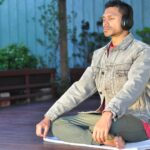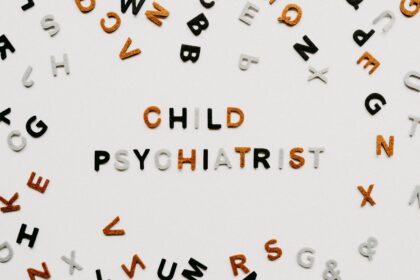Anxiety is more than just a fleeting feeling of worry or stress-it’s a complex force that silently weaves itself into the very fabric of our minds and hearts. For many, it’s an invisible companion, whispering doubts in moments of quiet and casting shadows over the brightest days. But what if we could truly understand this powerful emotion? What if by unraveling anxiety, we could reclaim peace and resilience from its grasp? In this journey, we’ll explore how anxiety shapes our thoughts, colors our emotions, and influences the way we live-offering not just insight, but hope for healing and connection.
Understanding the Invisible Weight Anxiety Places on Our Emotions
There’s a subtle heaviness that anxiety layers over our emotions-a weight so invisible that it often goes unnoticed, yet profoundly affects how we experience the world. It’s like carrying an unspoken tension, a quiet storm brewing just beneath the surface of our thoughts. This burden can leave us feeling constantly vigilant, drained, and emotionally frayed, as if every joy is tinged with an edge of worry. The heart races not just with fear, but with a constant undercurrent of tension that distorts even our happiest moments.
Living under this weight can change the way we connect with ourselves and others. The emotional fog anxiety casts often creates:
- Persistent self-doubt that whispers we’re not enough.
- Heightened sensitivity to criticism or perceived rejection.
- Emotional numbness as a defense against overwhelming feelings.
- Difficulty trusting our own emotions and decisions.
It’s a relentless, quiet force shaping not just our mind, but our heart’s capacity for peace and connection.
The Science Behind Anxiety’s Grip on Our Thoughts and Physical Health
Anxiety, at its core, triggers an intricate cascade of biochemical responses in our brain, hijacking our natural thought processes. The amygdala, often called the brain’s fear center, becomes hyperactive, sending alarm signals that warp our perception of reality. This persistent state of vigilance fuels a relentless loop of worry and rumination, making it seem as though our mind is trapped in a storm that refuses to calm. Meanwhile, neurotransmitters like serotonin and GABA-responsible for maintaining emotional balance-become imbalanced, amplifying feelings of restlessness and dread. It’s a biological symphony turned chaotic, where the very mechanisms meant to keep us safe start to overwhelm and weaken our mental resilience.
Beyond the mind, anxiety leaves a profound imprint on our physical health, often catching us off guard. Chronic stress hormones, such as cortisol, flood the body, leading to increased heart rate, muscle tension, and digestive disturbances. Over time, this relentless internal pressure can contribute to serious health issues-including hypertension, weakened immunity, and even cardiovascular disease. The body, much like the mind, struggles to find equilibrium, resulting in symptoms that can feel as consuming as the anxious thoughts themselves. In essence, anxiety weaves an unbreakable thread connecting heart and mind, reminding us that emotional turmoil is never confined to just one aspect of our being.
- Hyperactive amygdala: amplifies fear and threat perception
- Neurotransmitter imbalance: disrupts emotional regulation
- Cortisol overload: stresses heart and immune function
- Physical symptoms: muscle tension, rapid heartbeat, digestive issues
Practical Mindfulness Techniques to Calm the Storm Within
When anxiety feels like a relentless tempest inside, anchoring yourself in the present moment can be a lifeline. Begin with focused breathing techniques, such as the 4-7-8 method: inhale gently for 4 seconds, hold the breath for 7, then exhale slowly for 8 seconds. This rhythmic pattern calms the nervous system, easing physical tension and clearing mental clutter. Another powerful tool is the body scan meditation, which invites you to shift attention slowly from your head to your toes, acknowledging areas of tightness or discomfort without judgment. These practices don’t erase anxiety, but they create a space of calm beneath the storm.
Incorporating mindfulness into daily routines can transform moments of overwhelm into opportunities for grounding. Simple acts like savoring the taste and texture of your morning coffee, feeling the warmth of sunlight on your skin, or tuning into ambient sounds create powerful pauses that reconnect you with your inner peace. Consider keeping a journal nearby to capture fleeting thoughts or worries – writing them down externalizes their grip on your mind. Over time, the gentle practice of observing your internal landscape with compassion cultivates resilience, helping anxiety lose its hold on your heart and mind.
Nurturing Compassion for Yourself While Navigating Anxiety’s Challenges
When anxiety tightens its grip, it’s all too easy to fall into the trap of self-criticism and doubt. Yet, the true balm for the restless mind lies in tender kindness directed inward. Recognizing that your feelings are valid, and granting yourself permission to experience them without judgment, plants the seeds for healing. Remember, your response to anxiety is not a weakness; it’s a human reaction. Embrace your imperfections as part of the journey, allowing your heart to soften even in moments of turmoil. This compassionate approach transforms the internal narrative from harsh reprimand to gentle support, encouraging resilience rather than resistance.
Cultivating self-compassion is a practice that can be woven into daily life through simple, intentional acts. Consider incorporating:
- Mindful breathing: Pause and breathe deeply, acknowledging your present state without rushing to change it.
- Positive affirmations: Remind yourself of your strengths and inherent worth regularly.
- Journaling: Write out your fears and anxieties, then counterbalance them with moments of gratitude or kindness.
- Setting boundaries: Give yourself permission to step back from situations that heighten anxiety unnecessarily.
By honoring your emotional experience with patience and care, you create a safe space within, nurturing your spirit’s capacity to navigate anxiety’s challenges with courage and grace.
To Conclude
As we close this exploration into the intricate dance between anxiety and our inner world, it’s clear that anxiety is more than just an uncomfortable feeling-it’s a profound force that shapes our thoughts, colors our emotions, and molds the way we engage with life. While it can feel isolating and overwhelming, understanding its roots and recognizing its impact is the first courageous step toward healing. Remember, you’re not alone in this journey. By unraveling the tangled threads of anxiety, we open the door to greater compassion for ourselves and others, finding hope and resilience in the heart of uncertainty. Keep holding on, keep seeking, and most importantly, keep believing in the strength that lies within you.















